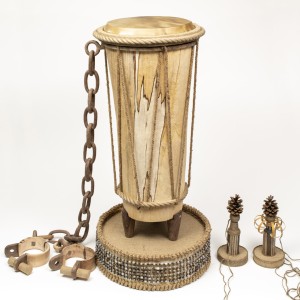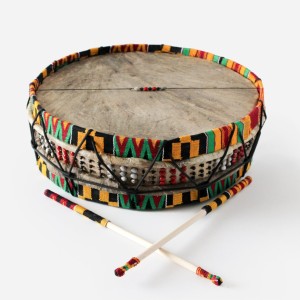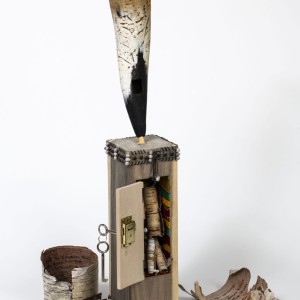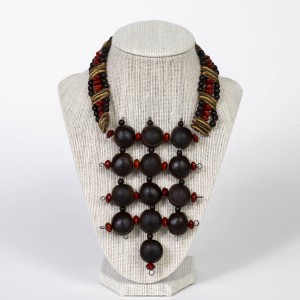Tyshan Wright
Artist Statement
These ceremonial objects have been used spiritually among Jamaican Maroons for centuries to guide Maroons towards ‘myal’—a sacred moment of communion with our ancestors. At the height of the transatlantic slave trade the Maroons lived free as hunters, gatherers, harvesting and creating from the land. But when a group of them was exiled to Halifax, Nova Scotia, in 1796, they were denied their ceremonial instruments. Using Nova Scotian wood and forest products, Maroon beads from Jamaica, and kente cloth from Ghana, my work represents the water crossings that are part of the Maroon story—from our origins in Ghana to Maroons’ exile from Jamaica to Nova Scotia.
I work from a culture that has been under threat for centuries—our Kromanti language has all but disappeared; many of our people have been exiled from their traditional lands; and we continue to struggle to preserve what remains of our cultural heritage. As an artist, my hope is that my work will contribute to keeping my culture alive.
Biography
Tyshan Wright hails from the historic Maroon Town of Accompong in St. Elizabeth, Jamaica. A 2021-22 Artist-In-Residence Fellow at NSCAD University’s Institute for the Study of Canadian Slavery, he is the AtlanBc region nominee shortlisted for the 2022 Sobey Art Award. Wright’s work has been acquired by the Nova Scotia Art Bank and presented in artist talks and exhibitions at Canadian galleries and museums including the Art Gallery of Ontario and the Canadian Museum of Immigration at Pier 21. A “Keeper Of The Heritage” (Jamaica Gleaner), he creates mixed-media representations of Jamaican Maroon ceremonial objects and instruments, examining the expulsion of Maroons from Jamaica to Halifax in 1796. His work imagines an alternate narrative where Maroons—who were denied their spiritual instruments in exile—made their cultural objects from local wood like maple, birch, and pine.






